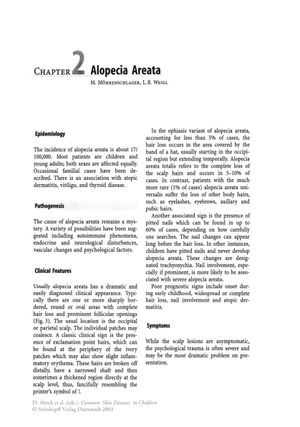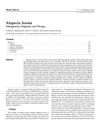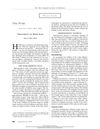Alopecia Areata
January 2003
in “
Steinkopff eBooks
”

TLDR Alopecia Areata is a hair loss condition affecting all genders, often linked to other diseases, with treatments available but varying success rates.
In 2003, the document described Alopecia Areata as a condition with an incidence rate of 17 per 100,000, primarily affecting children and young adults without a clear gender preference. It was associated with several other conditions, such as atopic dermatitis, vitiligo, and thyroid disease, and had an uncertain pathogenesis with multiple potential contributing factors. Clinically, it manifested as round or oval patches of hair loss, with less common severe forms like alopecia areata totalis and universalis. Nail pitting was common, and poor prognosis was linked to factors like early onset and extensive hair loss. Diagnosis was mainly clinical, with biopsy for uncertain cases. Treatment varied from watchful waiting, given the 60% spontaneous regrowth rate within a year, to interventions like topical corticosteroids and systemic corticosteroids, which had significant side effects and high recurrence rates. The document highlighted the psychological impact of alopecia areata and the need for supportive care, especially for children.



